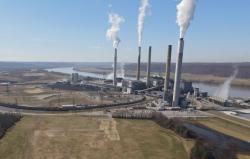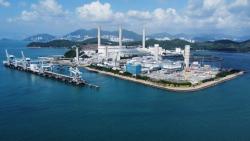
OR WAIT null SECS
© 2024 MJH Life Sciences™ and Turbomachinery Magazine. All rights reserved.
The new combined cycle benchmark: 65% efficiency
After giving an account of full steam injection in early gas turbines in the previous article, the author discusses the various energy sources we have today, and says we need a comprehensive energy plan for further action.
We are using the thermodynamic power cycles everyday to better our lives. The old benchmark of 60% combined cycle efficiency established in 1982 has been broken, and a new benchmark of 65% is now being established to be achieved in the next decade. Already the signs are there to reach halfway in just three or four years. All of the gas turbine companies are now working on their all new "J" model designs.
Mitsubishi Heavy Industry has said that their first "J" machine will fire at 2912o F to give 61% combined cycle efficiency. A more advanced model will have a firing temperature of 3092 o F for a combined cycle efficiency of 62 to 64 %. Commercial aviation gas turbines fire around 3000 o F; military gas turbines fire at even higher temperatures.
Natural gas vs. coal
The real question is: is the new shale natural gas being projected to be available in large quantities at a reasonable price or is it simply a "pie in the sky"? According to gas company experts, shale gas is here to stay at a stable and reasonable price. The natural gas companies are advertising heavily on TV about the great energy source for domestic use. Time will tell if these experts are right.
Are the gas frackers going to pollute the whole country side and our atmosphere and force the EPA to react and greatly slow down fracking and shale gas production? Let us look at coal use for power plants in the US today. The utility companies in 1978 - 1980 through FUA (Fuel Use Act of 1978 aimed at OPEC) and PURPA (Public Utility Regulatory Policy Act of 1980) denied use of natural gas fuel saying it was a premium fuel to be protected whereas the new Independent Power Producers (IPPs) were allowed to use it. The utilities were being forced to burn coal and thus installed many new coal burning power plants across the country. Then a few short years later natural gas became short in supply and gas prices skyrocketed. The IPPs were the ones in real trouble. The utilities thought all was all so right again as they had turned to coal.
All of a sudden shale gas recovery came about through shale fracking. Today West Texas and other places in the US are booming in shale gas fracking activity. Also, along with fracking for gas, fracking for crude oil in shale deposits has produced astonishing results in various states. Crude oil production is up in the USA.
New EPA rules
The EPA says coal must be tamed and the utilities must clean up their HAPs (Hazardous Atmospheric Pollutants). The new EPA rules are devastating to the utilities. The utilities have to clean up the HAPs or shut down plants. The older coal plants will have to be retired. Maybe some of the newer ones can be converted to burn gas and possibly become combined cycles. Texas is in real trouble with its high sulphur coal plants.
The highly efficient combined cycles are here at a reasonable cost for the utilities but the shift still will take time and money. Also these companies want to wait and see about this new gas supply. The integrated coal gas combined cycle (IGCC) showed some promise a few years ago but it appears that it is doomed after extensive funding by DOE. All is not lost, however, because this funding has pushed along the gas turbine "H" technology. Nuclear power was about resurrected again but it seems to be delayed a long time because of the Japanese incident and the recent flood water threats on the Missouri river.
Need of the hour
We are at the crossroads for energy development, use and control today, and we have been at this place for a number of years. We need a comprehensive national plan, a US energy program. We need to set up a team of experts who are not politicians to give us a plan of action. We need it now and not ten years from now. We need a plan to efficiently and thoughtfully use our new shale gas, our conventional gas, what crude oil we have left, our existing power plants, our electric grids, our atomic power plants, our hydro, our wind, our sun, and everything that deals with energy. How can we best use this new efficient combined cycle to burn this shale gas? We have a great opportunity and we must optimize all of our options.
In the next article, which is the concluding part of the series, the author explores the different ways and means by which we can save crude oil, with the efficient combined cycle and a national energy policy.
Ivan G. Rice was past chairman of the South Texas Section of ASME (1974 - 75), past chairman of the ASME Gas Turbine Division (now IGTI) (1975 - 76). A Life Fellow Member of ASME and Life Member of NSPE/TSPE, he has authored many articles and ASME papers on gas turbines, inter-cooling, reheat, HRSGs, steam cooling and steam injection.



